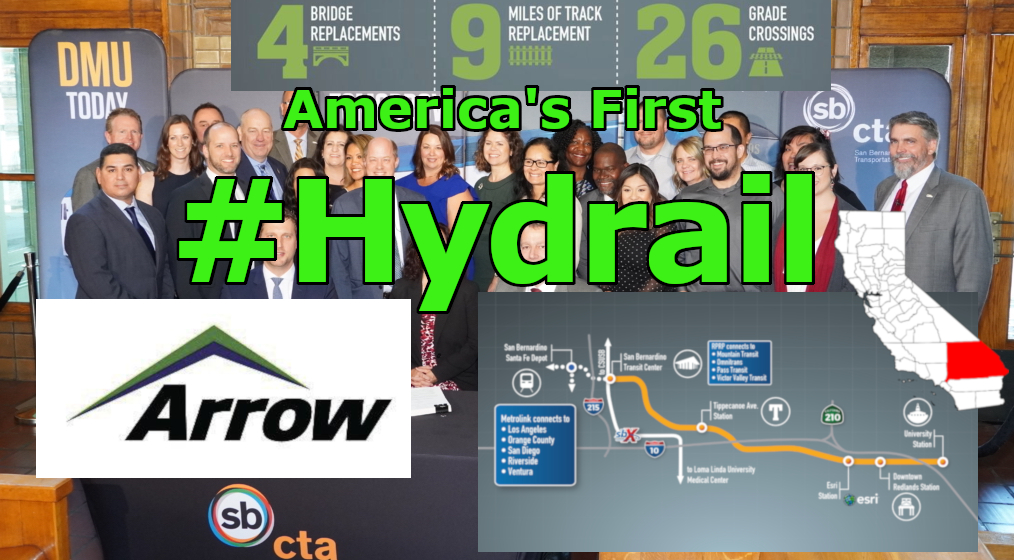Tag: h2o
-

NorCal Zero Project
It is a milestone day for hydrogen refueling. The Center for Transportation and the Environment announces the inauguration of the NorCAL ZERO project. This new station can serve up to 200 Class 8 heavy duty trucks per day. It has a capacity of 4,000 kilograms of LH2. The station also can refuel class 1 vehicles and…
-

USA’s First Hydrogen Passenger Rail – San Bernadino California
The Redlands Rail Project has commenced in California and soon will host the USA’s first hydrogen powered train. Not only that, Michigan State University played an important role in helping the San Bernadino County Transportation Authority decide on using hydrogen fuel cells. Click through to learn more about the first #hydrail project in America &…
-

General Motors Defense LLC – Full Size Fuel Cell Pickup Truck – The ZH2
GM Defense LLC was recently launched & the new ZH2 full size pickup truck platform was introduced at AUSA in Washington DC. In this post, RMP takes a look at the new full size fuel cell vehicle & it’s impressive stats. Click through to check out some pictures & a couple cool videos of these…
-

USA Quarterly H2 Infrastructure Update 2018-Q1
H2 infrastructure is growing all across the USA and especially in California. New H2 stations are planned all across the East Coast too. RMP will now regularly be publishing a quarterly update of H2 infrastructure all across the USA to keep our readers informed of what’s going on. Check out our first ever USA H2…
-

December 2017 – USA Public H2 Fueling Station Update
RMP will be publishing regular updates of our public hydrogen infrastructure map and data starting with this very post. Want to know what’s new with H2 infrastructure? Want to see the exact location of every public & private FCEV fueling location in America? Click through to read this post and check out RMP’s map.
-

Carbon Capture & Sequestration (#CCS) – Michigan’s Leading Role
Michigan is playing a leading role in Carbon Capture & Sequestration (#CCS). Developing solar & wind as renewable energy resources is very important, but there is a reality that fossil fuels will provide a majority percentage of global energy for many decades to come even if every single world citizen & legislator focused on eliminating…
-

Michigan Oil & Gas Monthly – August 2016
Michigan oil & gas activity gets busy in August of 2016. August has more applications for new wells than all seven previous months of 2016 combined. We have an applications for Carbon Dioxide Sequestration, High Volume Hydraulic Fracturing (HVHF), as well as applications to explore the Trenton Group in Lenawee & Monroe Counties. The HVHF…
-

Interactive Ann Arbor Dioxane Plume Map Demo
Check out RMP’s demonstration map of the Ann Arbor Dioxane Plume. This map gives an example of grafting an overlay to a Google Map. RMP’s maps can do a lot more than this demonstration but we can’t get further without your financial support. Check out the map and let us know what you think.
-

Michigan Oil & Gas Production Report January – December 2015
The 2015 full year petroleum production numbers are, according to RMP estimates, 98% reported. That means it’s time to review a whole host of tables and graphs showing you the top hydrocarbon producers in the Michigan Basin for 2015. Check out this annual production summary to see what got produced and where in Michigan. Also,…
-

Landfill #27 At Wurtsmith Air Force Base
Check out our interactive map of ground water contamination at the former Wurtsmith Air Force Base in Oscoda, Michigan. RMP considers Wurtsmith on our top 10 list of environmentally contaminated hot spots in the Michigan Basin. Perfluorinated compounds (PFCs) in fish surrounding WAFB were so high that Michigan Department of Community Health issued fish advisories…
-

Michigan Oil & Gas Monthly – January 2016
Why is a picture of a Colorado license plate the featured image for the first Michigan Oil & Gas Monthly of 2016? What does Colorado have to do with Michigan oil & gas? Read the January 2016 edition of MOGM to find out. This is our 13th issue marking the beginning of our sophomore year.…
-

Michigan Oil & Gas Monthly – August 2015
In the August 2015 MOGM, we take a look at the possibility of operating Antrim gas wells on a vacuum. We also talk about natural gas and synthetic natural gas. Natural gas is a part of our environment and always will be as long as there are living things.